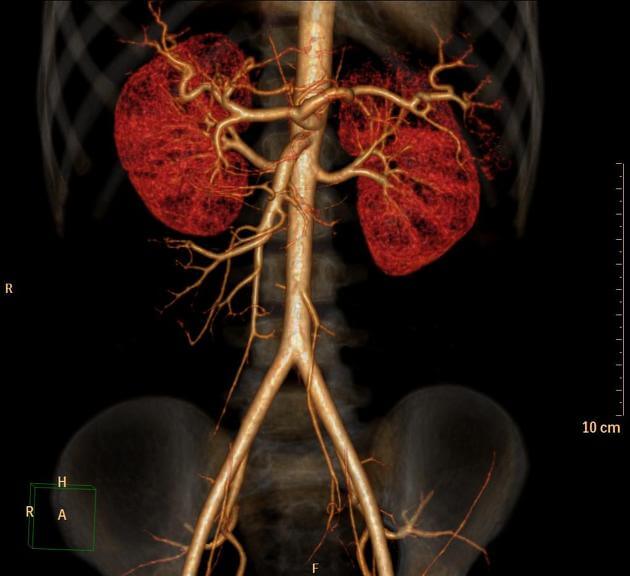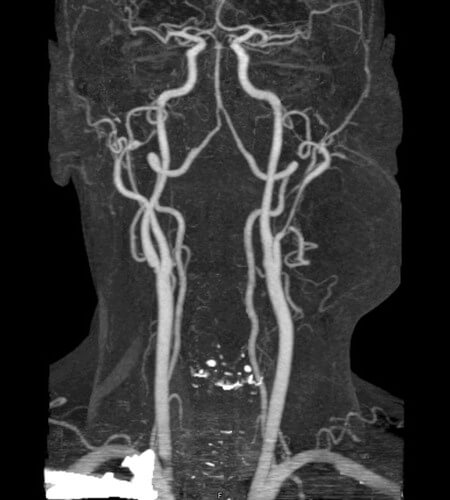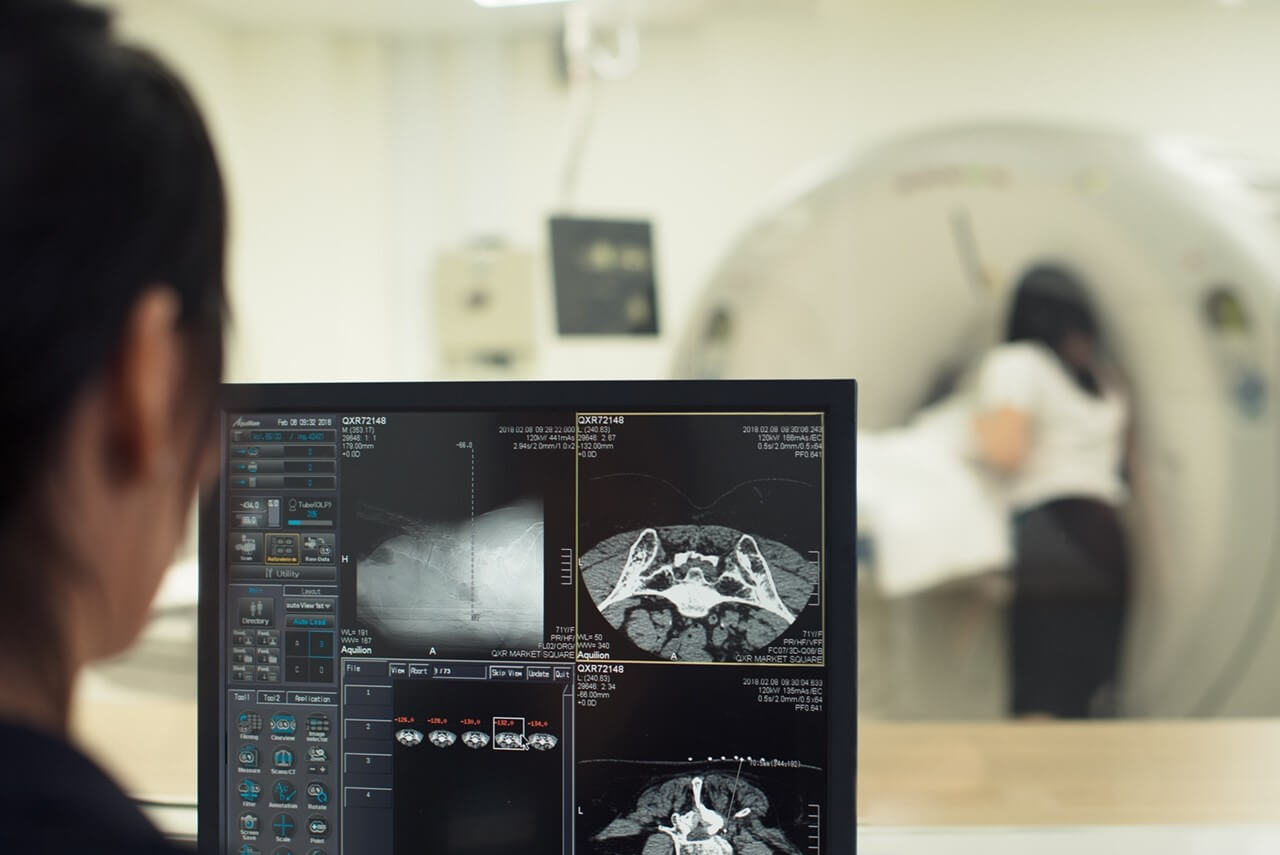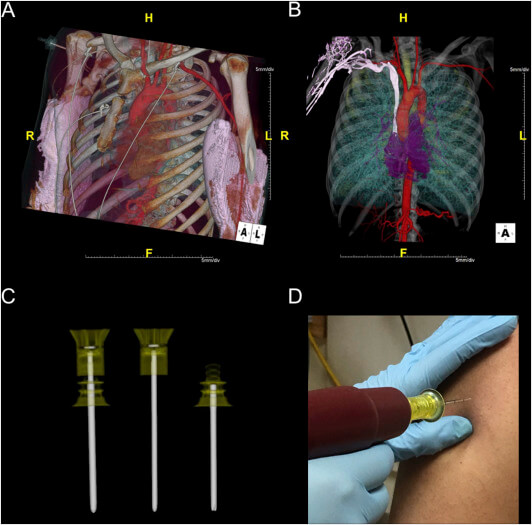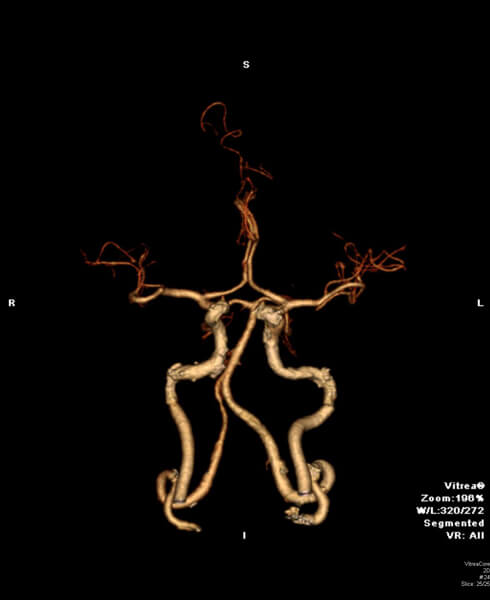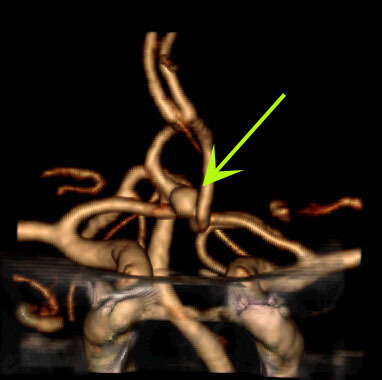CT Angiography
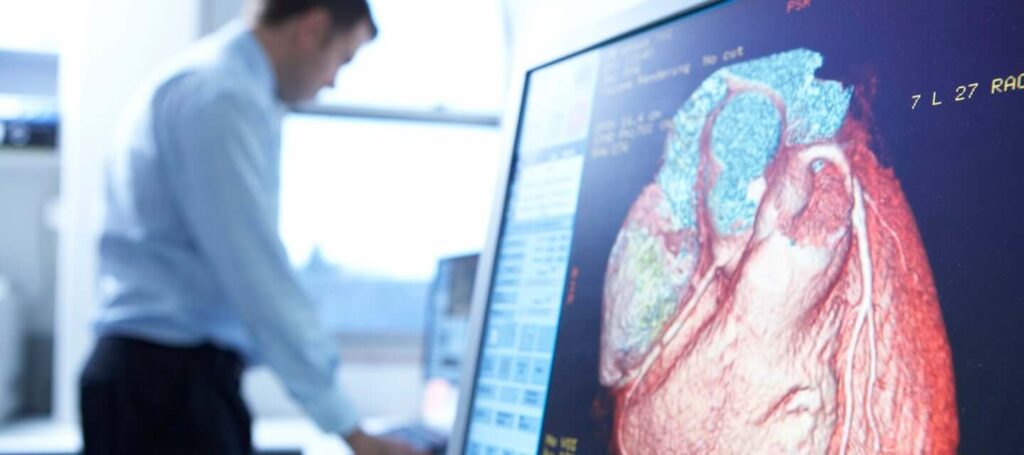
What is CT Angiography?
As the name implies, CT angiography is a scan or medical imaging using a
CT scanner
. But the word angiography originally means examining blood vessels. After combining these two names in English, we can say that CT angiography is a scan that is used by CT scanners to examine and observe the blood vessels of the body.
CT angiography uses CT and special color (contrast) to examine blood vessels in the brain, neck, heart, lungs, kidneys and legs. The CT scanner has a round span called a gantry in the center and a flat bed to lie down.
What is CT angiography used for?
If we go back to the previous definition, we should still say that CT angiography scans are used to capture very detailed images of the veins inside the head, neck, body, legs and arms. In general, it can be said that CT angiography is performed for the following reasons:
• For the diagnosis of aurism (places where blood vessels bulge or balloon)
• To determine whether blood vessels are torn or not
• To check for plaque or other blockages in blood vessels
• To determine the degree of artery disease, especially the blood vessels around the heart
• To check for problems in the brain, such as stroke or brain hemorrhage
• To identify blood flow problems, such as circulatory problems in the legs
• To check for any abnormalities of blood vessels
• Evaluation of coronary veins before pacemaker insertion
• To investigate the effectiveness of angioplasty or previous stent
• To evaluate the results of bypass surgery
Angiography is also sometimes used by surgeons to plan an operation or choose the best surgical procedure.
What are the risks of CT angiography?
First of all, we should note that your doctor is fully aware of the risks of CT angiography and if he prescribes you a CT scan, he knows that the benefits of doing this scan are far greater for you than the risks. So don’t worry at all. In general, the possible risks of CT angiography include:
• Possible damage to the fetus during pregnancy
• Very low risk of cancer if radiation is exposed to long periods of time
• Possibility of allergic reaction to contrast agent. You may experience nausea, sneezing, vomiting, itching, hives and dizziness. There may be more serious reactions, but they are very rare.
• Infection, bleeding or injury at the injection site
If you are still concerned about the risks of CT angiography, talk to your doctor before scanning.
What is the preparation for CT angiography?
- Bring with you your referral letter or application form and all X-rays taken in the last 2 years.
- Wear comfortable and loose clothing.
- Leave all jewellery and precious objects at home.
- You may be asked not to eat for a few hours before scanning.
- If you are pregnant or may be pregnant, let the experts at the CT scan centre know.
- Tell the centre’s experts about any allergies and medical conditions you have, including asthma, diabetes, heart disease, kidney disease or thyroid problems.
- If you are taking certain medications, be sure to inform the experts of the center.

What happens during CT angiography?
First, the expert will ask you to lie on the CT scan bed. Straps or pillows may be used to help you during a scan.
The center expert injects a syringe containing colored materials into your arm.
You may feel a little cool and hot flashes in the injection area for a few seconds
Part of your body may feel warm – if this bothers you, let the expert know.
The expert then leaves the scanning room and monitors the movement of the bed from behind the glass in the control room. The expert will always be able to see, hear and talk to you. You can also talk to the expert all the time. The device expert will tell you what’s going on, when to stay motionless and whether it’s necessary to take a deep breath and hold it. If you feel short of breath, let the expert know immediately.
A CT scanner
is a remote control device and experts are able to control all movements from the control room. Then the scan starts and you slowly log in inside the device. When the scan is finished, the device will take out your work on its own and the expert will analyze the CT angiologic images taken so that nothing has been missed.
When everything is right, the expert returns to the scanning room again, helping you get out of bed and out of the room.
The total duration of angio CT scan, including preparation and imaging procedures, takes between 30 minutes and one hour.

CT Angiography FAQs
When will the CT angiography answer be prepared?
How long it takes to get your CT angiography response varies depending on where you perform the scan. The radiology physician of the center should look carefully at the images and write their report. Images may be on movies or CDs. The process usually takes between two and five days.
Can CT angiography detect blockage of veins?
Overall, CT angiography accurately identifies artery obstruction in more than 90 percent of patients.
Is CT angiography painful?
CT angiography scan is painless. When the CT scan device turns around you, you may hear clicks, turns and buzzes. You may be asked to hold your breath during the scan.
Angiography or CT angiography – which is better?
CT angiography is fast and non-invasive and may have fewer complications compared to conventional angiography
. CT angiography may provide more detailed anatomical details than other angiography tests such as conventional catheter angiography and MRI.
What is the difference between CT scan and angiography?
CT Angiography vs. Angiography
The main difference between these two methods is that while a standard angiography consists of a catheter that is studied in the artery and region, CT angiography does not require catheter insertion.
What is an aneurysm?
Aneurysm is a bulging and weak area in the walls of the blood vessel. It may occur in any blood vessel, but it often develops in the artery instead of the vein. Aneurysm can be categorized by location, shape and cause.
Aneurysms may occur in many areas of the body such as:
• Brain (brain aneurysm)
• Aorta (aortic aneurysm)
•Neck
• Intestines
•All
•Spleen
• Blood vessels in the legs (iliac, femoral or popliteal aneurysm)
The most common types of aneurysms are in the aorta. The aorta is the body’s largest artery. The aorta delivers oxygenated blood from the heart to the body. Thoracic aortic aneurysm resembles an S that develops in the chest cavity. Abdominal aortic aneurysm occurs in the abdomen.
Sample CT Angiography Images
Picture above: A CT image of head and neck angiography showing the main arteries. Screenshot 2015: CT angiography image of anterior communication artery aneurysm in the brain (arrow). An aneurysm is a bulge in the artery wall that can rupture under certain conditions.
Final word on CT angiography and CT angiography
CT angiography is one of the best diagnostic imaging methods for evaluation of blood vessel obstruction. This scan is a procedure with injections. Keep in mind that if you want to go to the CT scan center for an angio CT scan, be sure to have one with you. Try to make your own CT
angio
from the nearest CT scan center.
To do this, you can easily book a CT scan from the nearest CT scan center. In the scan of medicine, you can know exactly how to perform CT angiography scan, take turns CT angiography and see your CT angiography response.

